- Details
- Hits: 1946
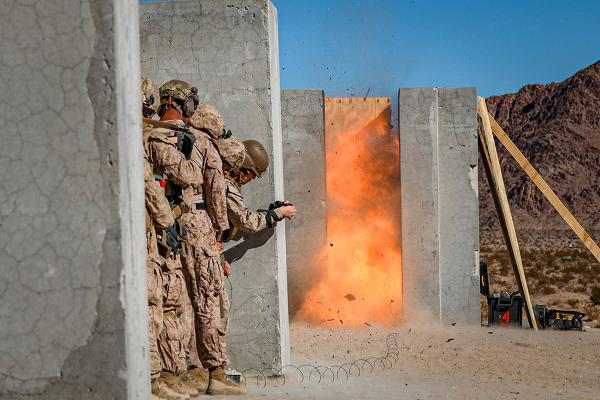
Marine Corps Air Ground Combat Center Twentynine Palms, California. (January 9, 2025): It is called an “explosive breach” and involves a Marine literally blowing your door down. In this photo by Lance Corporal Orion Stpierre, Marines ignite an explosive to breach an obstacle during a squad urban fundamentals course. Explosive Breaching uses pyrotechnics to blast an opening in walls, doors, or other barriers to entry and it is a deadly science. Operators must determine the best kind of explosives to use, how much is needed, and where to place them safely.
This involves developing a detailed plan based on a deep knowledge of material science, types of structures, and the physics of explosives. The explosive option is used when dealing with extremely fortified targets or in high-stakes operations like urban combat, hostage rescues, and counterterrorism.
After determining the type and power of the explosives to be used, operators then decide the method to direct the energy of the blast. This often involves a breaching frame, a device to direct the energy of the explosive into the target structure while limiting damage to the surrounding area.
- Details
- Hits: 3224

Lukunor, Micronesia. (January 7, 2025): This year’s Operation Christmas Drop has concluded marking 73 years of delivering aid to some of the most isolated communities in the world. In this photo by Senior Airman Natalie Doan, Air Force Senior Airman Blake Janssen, a 36th Airlift Squadron instructor loadmaster, watches the release of four low-altitude airdrop bundles containing humanitarian goods to islanders below.
The longest-running Department of Defense humanitarian airlift, Operation Christmas Drop began in 1952 after a B-29 Superfortress aircrew dropped supplies to waving children on the island of Kapingamarangi. Just like Airmen did in 1948 during the Berlin Airlift, American flyers began dropping candy bundles to waving children as they flew back and forth on training missions. These individual acts of kindness soon grew into an organized operation to provide aid to isolated populations like Micronesia.
- Details
- Hits: 3646
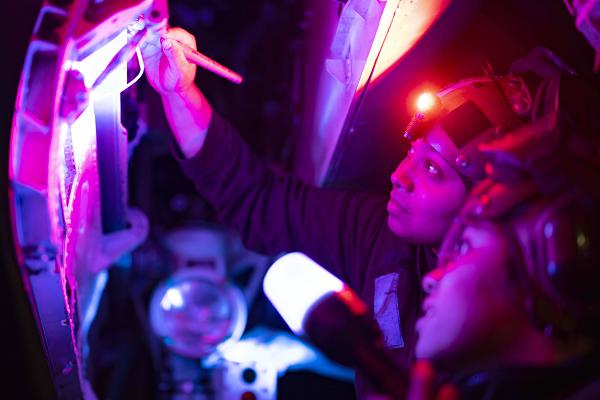
Philippine Sea. (January 6, 2025): With its minimal armament and heavy electronics payload, the Navy’s EA-18G Growler isn’t looking for a dogfight. In this photo by Petty Officer 2nd Class Isaiah B. Goessl, Seamen Joslyn Ortega, left, and Demary Rivera perform preventative maintenance on this unique airplane aboard the aircraft carrier USS Carl Vinson.
The Growler is an electronic attack aircraft that plays a key role in disrupting enemy communications and air defenses. While flying from an aircraft carrier, the Growler can jam enemy radar, protect allied aircraft, and provide electronic intelligence, surveillance, and reconnaissance data to the fleet.
- Details
- Hits: 3735
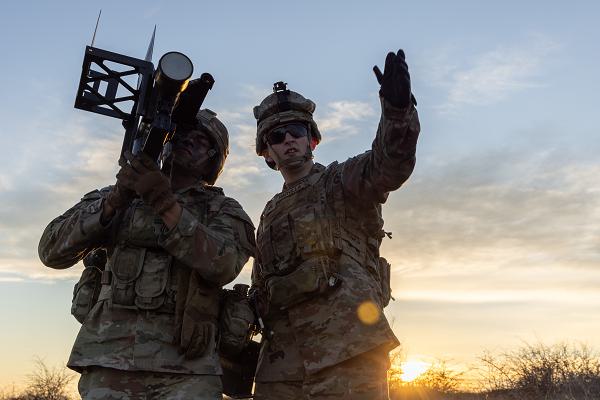
Babadag Training Area, Romania. (December 27, 2024): It is a weapon that terrorized Russians forces in Afghanistan and is knocking their planes out of the skies over Ukraine today. The weapon is the Stinger, a shoulder-launched heat-seeking antiaircraft missile that continues to devastate Russian armor today. In this photo by Sergeant Austin Steinborn, Specialist Alexis Ortega (left) and Sergeant Blaise Harvilla (right) use a Stinger Field Handling Trainer to track a UH-60 Black Hawk helicopter during air defense training. These trainers help gunners learn essential weapon handling skills, sighting and ranging, and how to visually track live aircraft.
In the 1980s, the U.S. covertly provided Stinger missiles to insurgents during the Soviet Afghan War helping clear their skies of Russian aircraft. The weapon had such an effect that it is credited with helping end the Soviet occupation that led to the eventual collapse of the Soviet Union. Today, the Americans and its allies are sending thousands of Stingers to Ukraine to help them do the same.
- Details
- Hits: 4180
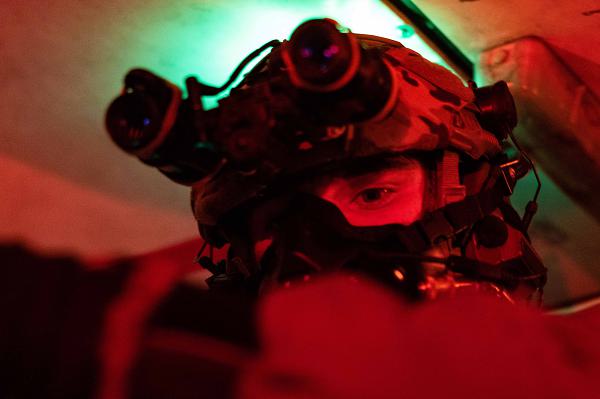
Yuma Proving Ground, Arizona. (January 5, 2025): It is a place where Special Forces learn to turn themselves into human airplanes, leaping into space and flying themselves to pinpoint locations on the ground. In this photo by Sergeant Nathan Mitchell, a Marine prepares to conduct a high-altitude high-opening jump during military free-fall sustainment training. Learning how to do combat insertions by parachute is the specialty of the Army’s Military Freefall School, a part of the John F. Kennedy Special Warfare Center.
The school teaches members of all services the art of military freefall parachuting in three courses, basic, jumpmaster and advanced military freefall. The center teaches two types of parachute insertion techniques, the HALO (high altitude-low opening) and the HAHO (high altitude-high opening). The goal of each is to parachute from aircraft and arrive at their target with accuracy and stealth.
"High Altitude Low Opening" (HALO) is where a jumper exits the aircraft at a very high altitude and then “flies” great distances before deploying their chutes at low altitude. This longer freefall period increases the precision of the landing. Used extensively by Special Forces operators, the "high" refers to the exit altitude and "low" refers to the parachute opening altitude.
- Details
- Hits: 2208
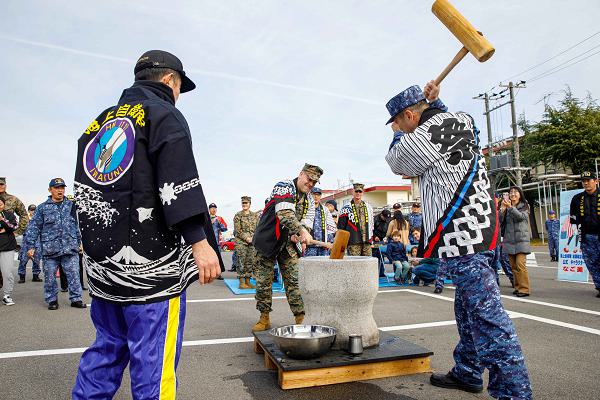
Iwakuni, Japan. (January 2, 2025): In the hopes of bringing good fortune, U.S. forces joined Japanese troops in a cultural practice that dates back centuries. In this photo by Lance Corporal David Getz, Marine Corps Colonel Richard Rusnok, center, and Japanese Rear Admiral Ichiro Ishikawa, right, hammer rice during a traditional Mochitsuki mochi pounding, an ancient New Year’s tradition.
Mochitsuki , or mochi, is steamed rice that is mashed and pounded with wooden mallets in a traditional mortar. The word mochi means “to have” and the dish is considered an auspicious food that brings good health, long life, and good fortune. The work involves two people, one pounding and the other turning and wetting the mochi. Teamwork is key as they must keep a steady rhythm or they may accidentally injure each other with these heavy mallets.


